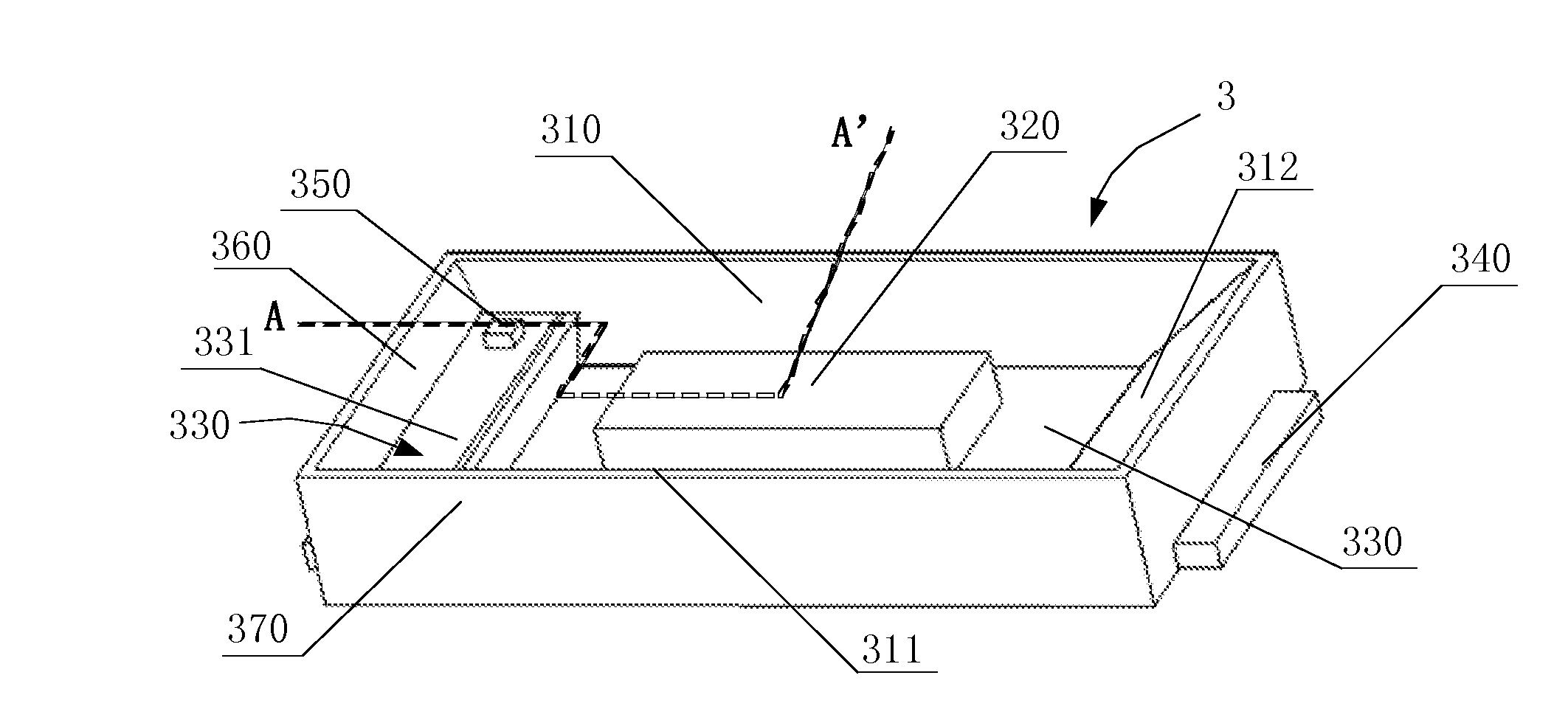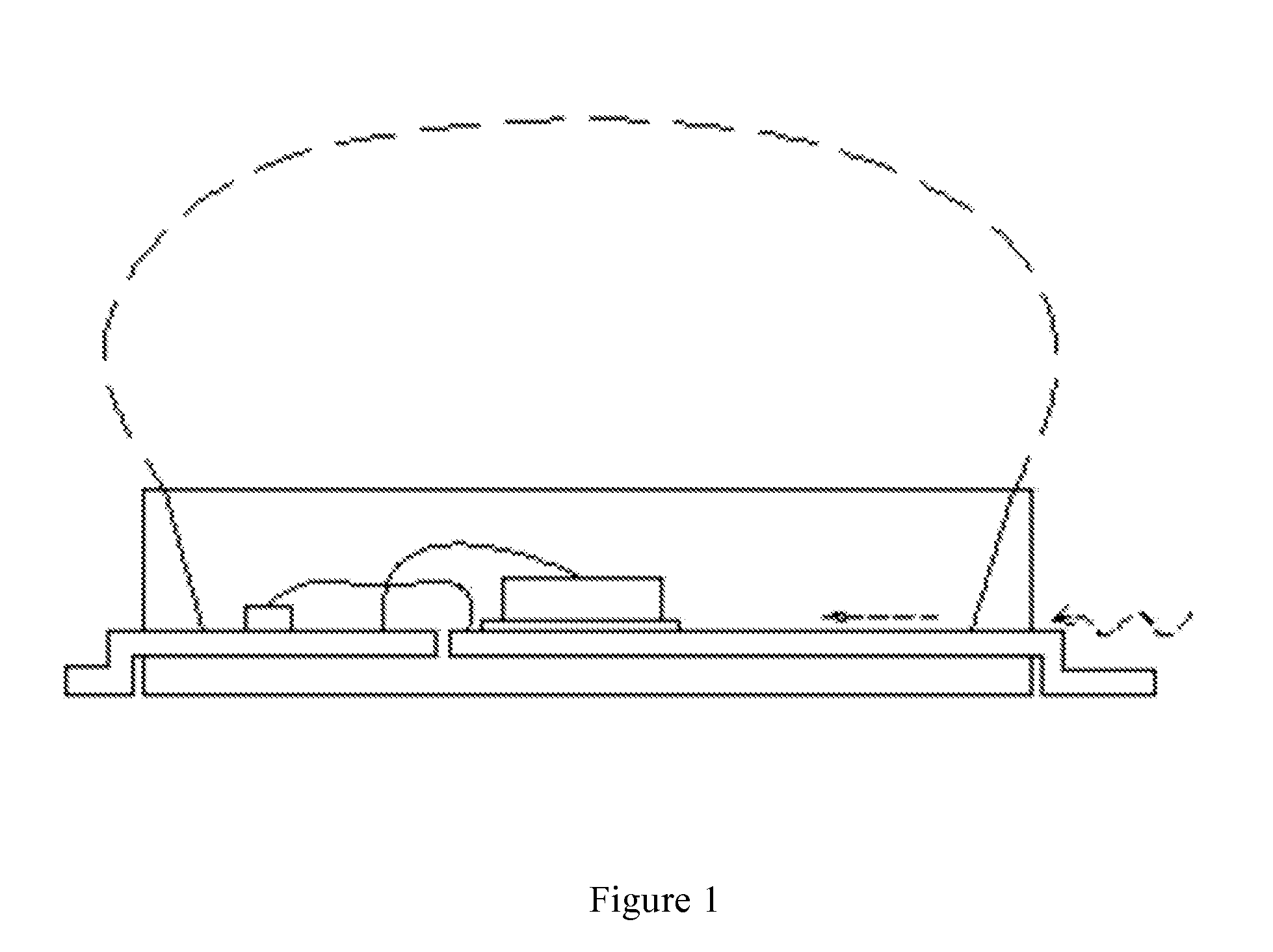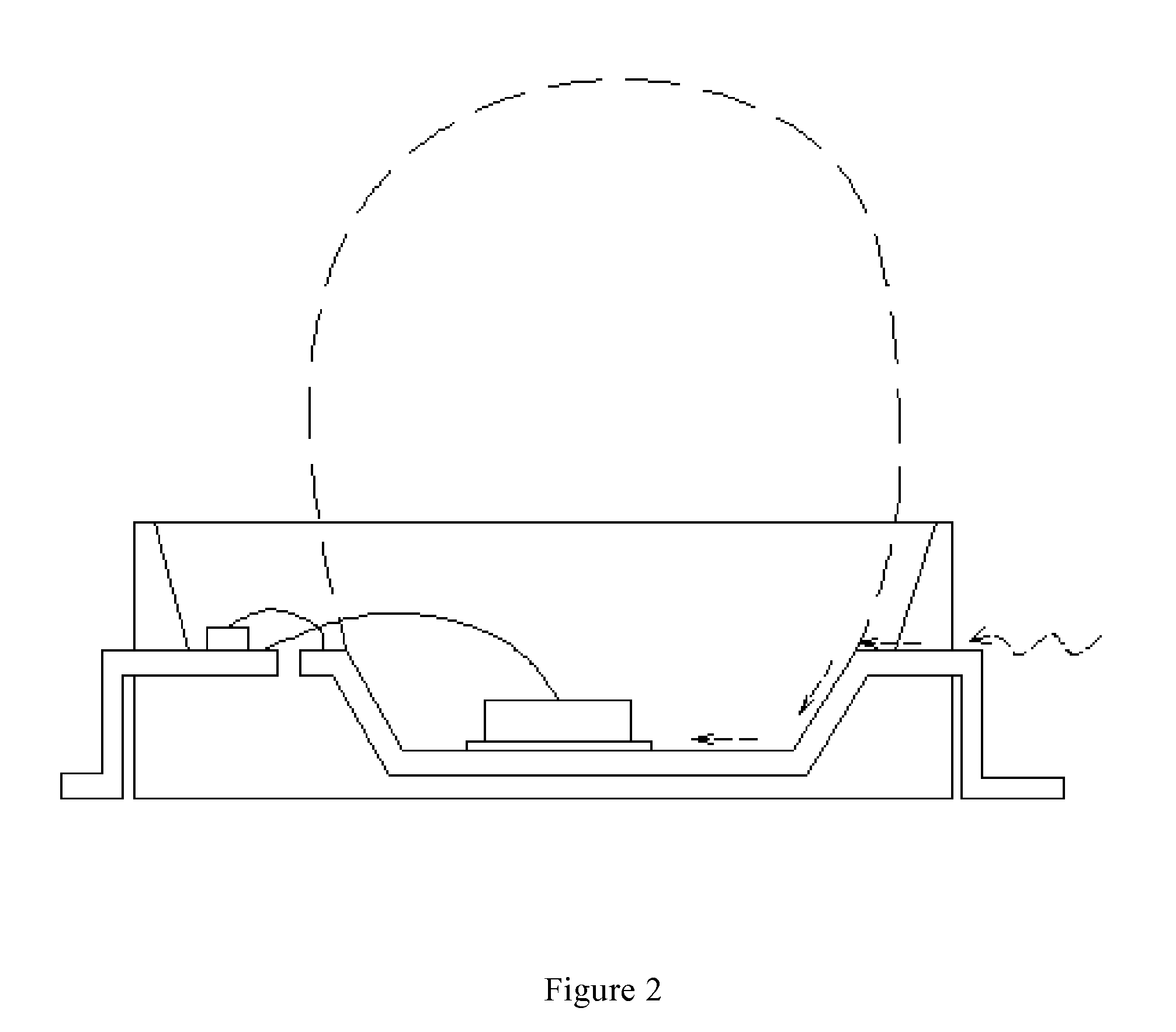LED, Backlight Module, and LCD Device
a technology of backlight module and led, which is applied in the field of electromechanical displays, can solve the problems of poor conduction between the chip and the electrode, cracking at the joint of the plastic material and the electrode and the joint, and the chip arrangement of the common led chip does not benefit light dispersal, so as to reduce the oxidation of the electrode and increase the contact area , the effect of strong adaptability
- Summary
- Abstract
- Description
- Claims
- Application Information
AI Technical Summary
Benefits of technology
Problems solved by technology
Method used
Image
Examples
example 1
[0032]As shown in FIG. 6, one of the two side walls adjacent to the step surface is provided a first inclined surface 310. The acute angle that the first inclined surface 310 intersects the bottom plane of the inner cavity is between 0.5° and 89°, preferably, between 30° and 60°. The electrodes 330 can be arranged on the two short side walls of the inner cavity, and accordingly, the first inclined surface 310 can be arranged on the long side wall of the inner cavity. Optionally, the electrodes 330 can be arranged on the two long side walls of the inner cavity, and accordingly, the first inclined surface 310 can be arranged on the short side wall of the inner cavity.
[0033]To prevent the chip from being broken down by static electricity, one of the electrodes is connected with a Zener in series. The Zener is arranged on the step surface. Thus, the Zener can be prevented from absorbing light.
example 2
[0034]As shown in FIG. 7, both the two side walls adjacent to the step surface are respectively provided with a first inclined surface 310 and a second inclined surface 311. The acute angle that the inclined surfaces intersect the bottom plane of the inner cavity is between 0.5° and 89°, preferably, between 30° and 60°. The electrodes 330 can be arranged on the two short side walls of the inner cavity, and accordingly, the first inclined surface 310 and the second inclined surface 311 can be arranged on the long side walls of the inner cavity. Optionally, the electrodes 330 can be arranged on the two long side walls of the inner cavity, and accordingly, the first inclined surface 310 and the second inclined surface 311 can be arranged on the short side walls of the inner cavity.
[0035]To prevent the chip from being broken down by static electricity, one of the electrodes is connected with a Zener in series. The Zener is arranged on the step surface. Thus, the Zener can be prevented f...
example 3
[0036]As shown in FIG. 8, one electrode 330 provided with a Zener 350 is convex to form a step surface 331 at the bottom of the inner cavity, the other electrode 330 is arranged at the bottom of the inner cavity, and one side thereof corresponding to the inner cavity is provided with an inclined surface to form a third inclined surface 360. The acute angle that the inclined surface intersects the bottom plane of the inner cavity is between 0.5° and 89°, preferably, between 30° and 60°. The example can be randomly combined with either the aforementioned first example or second example, particularly the second example. Thus, three side walls of the four side walls of the inner cavity are respectively provided with an inclined surface to form the first inclined surface 310, the second inclined surface 311, and the third inclined surface 360, thereby ensuring the maximum light emitting range.
[0037]The electrodes 330 are arranged on the two short side walls of the inner cavity, and accor...
PUM
 Login to View More
Login to View More Abstract
Description
Claims
Application Information
 Login to View More
Login to View More - R&D
- Intellectual Property
- Life Sciences
- Materials
- Tech Scout
- Unparalleled Data Quality
- Higher Quality Content
- 60% Fewer Hallucinations
Browse by: Latest US Patents, China's latest patents, Technical Efficacy Thesaurus, Application Domain, Technology Topic, Popular Technical Reports.
© 2025 PatSnap. All rights reserved.Legal|Privacy policy|Modern Slavery Act Transparency Statement|Sitemap|About US| Contact US: help@patsnap.com



